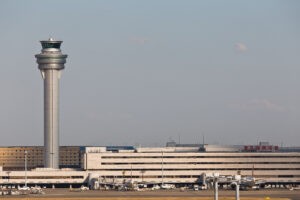NEWS
Japan Airlines collision – latest
Airliner with 379 onboard crashed while landing at Japan airport after it struck coastguard plane.
A Japan Airlines plane was engulfed in flames after it struck a coastguard aircraft at Tokyo’s Haneda airport while attempting to land. All 379 onboard, including passengers and crew, managed to evacuate the A350 plane safely, although 17 received minor injuries.

Japan’s Haneda Airport, Tokyo where the incident tool place. CREDIT: Wing Lun Leung/ Alamy Stock Photo
Of the six passengers onboard the coastguard plane, a Bombardier Dash-8, only the pilot survived. It is understood the plane was part of a relief effort in response to several severe earthquakes across the country.
An investigation is currently ongoing to establish when it made contact with Japan Airlines Flight 516 and how it came to be in its vicinity. However, a transcript released by Japan’s Ministry of Transport reveals the coastguard plane was asked to wait at a holding point before taking off. It contradicts the testament of the pilot who told authorities he had been given permission.
The BBC has also found information that suggests the series of lights at the relevant holding point may not have been working, however, painted markings that show where aircraft need to stop, would still have been visible, experts claim.
Firefighters on the scene tackled the blaze for two hours before the fire was brought under control.
Possible heat shield
The aircraft’s materials are being cited as a reason for the passenger’s successful evacuation. Its fuselage and wings were composed of carbon-fibre composite materials which are less heat resistant than metal.
Dr Sonya Brown, a Senior Lecturer in Aerospace Design at the University of New South Wales’ School of Mechanical and Manufacturing Engineering, told the Guardian that previously, passenger jets were mostly made from metal, however aviation engineers have been increasing the proportion of carbon fibre composite materials to reduce weight and increase efficiency of planes.
She added that around half of the A350 is made from carbon fibre reinforced polymers, and described its reaction to heat: “Carbon fibre composites might start to lose some of their stiffness at about 200 degrees, while aluminium will melt at about 700 degrees, but the fire we saw on that fuselage will have had temperatures above 1000 degrees Celsius,” she said.
However the burning of composite materials may have formed an added heat shield for passengers and crew on board, as Emile Greenhalgh, Professor of Composite Materials at Imperial College in London told the Financial Times: “As the material burns, all the flammable material forms a char layer . . .[so] you end up with a barrier against the progression of fire.”
Pilot unaware of fire initially
The efficiency and quick thinking of the cabin crew were key to the A350’s successful evacuation, a Japan Airlines Spokesperson has said. “Right after the plane touched down, the pilot felt a sudden shock, and lost control to stay in the runway. A fire took place but the pilots didn’t recognise it in the beginning and learned about it [through the] cabin attendant.
“The first thing cabin attendants did [after they realised there were] passengers who recognised that their plane was on fire, was to make them stay calm and not to stand up, which could make the escape very difficult. The announcement system was unusable so these instructions were made without it.”
Airbus, the maker of the A350 plane, has said it will assist with the investigation into the incident, which will also include the Japanese Transport Safety Board.
Japan Airlines collision – latest
Airliner with 379 onboard crashed while landing at Japan airport after it struck coastguard plane.
Safety & Health Practitioner
SHP - Health and Safety News, Legislation, PPE, CPD and Resources Related Topics
Housing company fined more than £500k after worker suffers burns
SHP weekly top five
Company fined as worker has leg amputated

